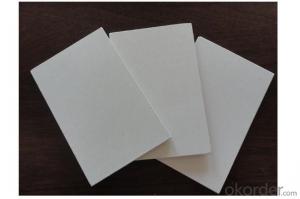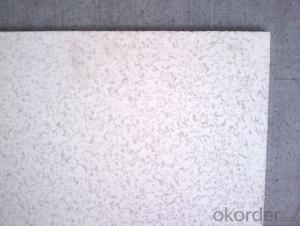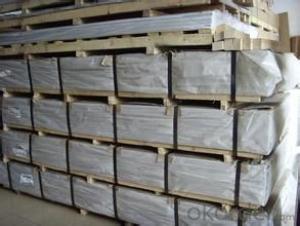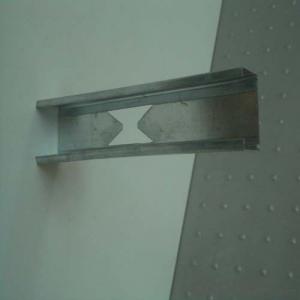Aluminum Sheet And Plate
Aluminum Sheet And Plate Related Searches
Led Light Bulbs For Ceiling Fixtures Led Lamps For Ceiling 42 In Ceiling Fan With Light Aluminum Coil Stock For Gutters Aluminum Foil For The Grill Hole Saw For Aluminum Plate Aluminum Tread Plate For Trailer Bow Plate For Aluminum Boat Aluminum Foil For Grow Room Aluminum Foil For Joint PainHot Searches
Stock Price For Aluminum Aluminum Coil Stock For Sale Aluminum Gutter Coil For Sale Used Aluminum Scaffolding For Sale 1/4 Aluminum Plate For Sale Aluminum Bar Stock For Sale Aluminum Round Stock For Sale Aluminum Diamond Plate For Sale Aluminum Scaffolding For Sale Craigslist 6061 Aluminum Plate For Sale Aluminum Dock Plate For Sale 7075 Aluminum Plate For Sale Aluminum Tread Plate For Sale Aluminum Checker Plate For Sale Aluminum Plate For Sale Near Me Plate Aluminum For Sale Aluminum Plate For Sale Aluminum Square Stock For Sale Aluminum Flat Stock For Sale Billet Aluminum Stock For SaleAluminum Sheet And Plate Supplier & Manufacturer from China
Okorder.com is a professional Aluminum Sheet And Plate supplier & manufacturer, offers integrated one-stop services including real-time quoting and online cargo tracking. We are funded by CNBM Group, a Fortune 500 enterprise and the largest Aluminum Sheet And Plate firm in China.Hot Products
FAQ
- I am doing some exam review and do not know how to do these...Calculate the number of Nitrate ions in 3.99 g or aluminum nitrate.
- OK - first you need the ENTIRE mass of the aluminum nitrate (gram formula mass). You need the correct formula for aluminum nitrate, then add up the atomic masses from the periodic chart. Then, you need to convert 3.99 g of aluminum nitrate to moles of aluminum nitrate. (grams/formula mass = moles) Then, you need to take into account how many moles of nitrate ions are in a mole (look at the correct formula for aluminum nitrate). Then multiply by the number of moles you calculated (moles of ions per molecule x #moles). This would be moles of ions. You need individual ions you would the multiply by 6.02 x 10^23 ions/mole. SO: grams of sample divided by formula mass x #nitrate ions per molecule x (6.023 x 10^23 ions per mole) = # ions
- Aluminum sheets typically have a flammability rating of Class A, which means they have a low flammability and are considered non-combustible.
- The different types of finishes used for decorative aluminum sheet include brushed, polished, anodized, embossed, and powder coated finishes.
- Indeed, heat lamps can utilize aluminum sheets as they possess remarkable heat conductivity. This quality enables aluminum to efficiently transmit and disperse heat, rendering it suitable for heat lamps that necessitate proficient heat distribution for effective warming of objects or spaces. Furthermore, the lightweight nature, durability, and high melting point of aluminum make it a practical and sensible option for heat lamp purposes.
- Yes, aluminum sheets can be perforated for ventilation purposes. Perforating aluminum sheets allows for the passage of air, making them suitable for ventilation applications in various industries.
- Yes, aluminum sheets can be used for flooring. Aluminum is a lightweight and durable material that can withstand heavy foot traffic and is resistant to corrosion. It is commonly used for industrial flooring, outdoor decks, and transportation platforms.
- We just bought a house with aluminum wiring and we knew about it in the inspection report, but everyone kept telling us it's no big deal. There was so much going on and I didn't look into it myself and now I just surfed the web on it and I am filled with anxiety! Please help! Did we make a huge mistake? How common are the dangers? Also, my insurance company didn't ask me about wiring, but some sites said that they don't cover aluminum wiring. Should I ask them? I am so overwhelmed and scared. I do not want a fire for my family!
- The aluminum is a soft metal and compresses and tends to loosen at the wire connections. It was probably installed properly with the semi compound and is probably ok. But the connections could be loose and cause a hot junction over heat in your service breaker box (Load Center). Every connection in the panel could be tightened a Quarter or half turn to snug them up by an electrician in just thirty minutes or so. and ease your concerns. Pay attention when he does and see if they turned or were still snug. this will give you insight into when to re check them a year or so down the line.
- Aluminum sheets are available in a variety of thicknesses, ranging from extremely thin to thick. The thickness of aluminum sheets is measured in gauge or millimeters (mm), with each gauge representing a specific thickness. The most common gauges for aluminum sheets include 22, 24, 26, 28, 30, and 32. These gauges correspond to thicknesses ranging from 0.0254 mm to 0.635 mm. Additionally, aluminum sheets can be found in thicker gauges, such as 16 gauge (1.29 mm) or even thicker for specialized applications. The choice of thickness depends on the intended use of the aluminum sheet, with thinner sheets often being used for lightweight applications like electronics or packaging, while thicker sheets are preferred for structural or industrial purposes.















































